Four-glass gilt and chased bronze table regulator, signed Robin à Paris, circa 1850. Chased gilt-bronze case, flat thick bevelled glass on all sides, domed bevelled glass for the three circular dials. Large main enamel dial, signed by the enameller Baudet on the reverse, with five concentric indications: half-seconds, hours with Roman numerals, minutes with a gold dot every five, months of the year and days of the year. Four concentric steel hands indicate the seconds, minutes, hours and the annual calendar. The first three hands in blued steel, the calendar hand in straw-coloured steel. Lower subsidiary enamel dials: the days of the week on the left and the age of the Moon on the right. Countwheel strike with vertical hammer and silvered bell placed on top, heavy gridiron pendulum with gilt bob, pin-wheel escapement and steel suspension, together with a constant-force remontoire make for great precision. Autonomy: 30 days.
Height 51 cm (20 1/8"); Width 34 cm (13 3/8"); Depth 24 cm (9 3/8")
Followed admirably in the footsteps of his father, Robert Robin, ‘Privileged Merchant-Watchmaker of the King following the Court and Councils of His Majesty.’ A major figure of French horology during the reign of Louis XVI, Robert Robin (1742-1799) had a reputation for excellence that lasted throughout the First Empire and the Bourbon Restoration. The laudatory jury report of the 1819 Exhibition of French Industrial Products (Rapport du jury de l’exposition des produits de l’industrie française), makes known that Jean-Joseph Robin (1781-1856) enjoyed the same status as his father: ‘Mr. Robin fils presented two very finely executed astronomical clocks; He maintains the high reputation earned by his father’s numerous and important works. The jury considers that Mr. Robin is still very worthy of the 2nd class silver medal, equivalent to the bronze medal that he was awarded at the last exhibition’ (Sect.III., ‘Horlogerie astronomique’, p. 251). At the start of his career, in partnership with his brother Nicolas-Robert (1775-1816) under the company name MM. Robin frères, rue Saint-Honoré n°320, Jean-Joseph Robin, instilled early on with a respect for family tradition, transformed some of his late father’s models signed Robin aux Galeries du Louvre à Paris.
Derek Roberts, Precision Pendulum Clocks, France, Germany, America and Recent Advancements, 2004, page 36, fig. 26-10 repr., erroneously dated ‘circa 1790’.
Lambinet Museum in Versailles; Musée du Grand Trianon in Versailles; St Cloud Palace, North of Paris

Precision Table Regulator with perpetual calendar, circa 1850, signed on the dial and on the rear movement [...]
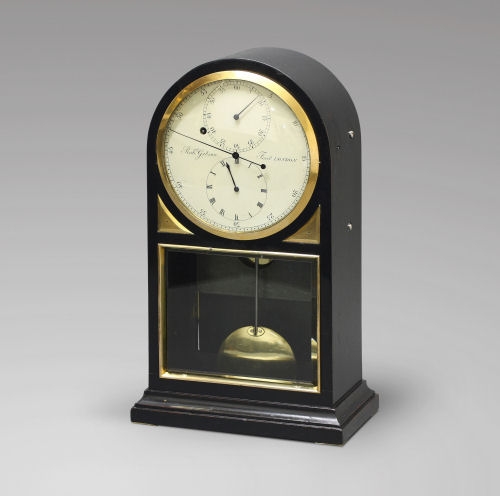
ROBERT GIBSON, N°2, experimental table regulator, circa 1810, square movement [...]
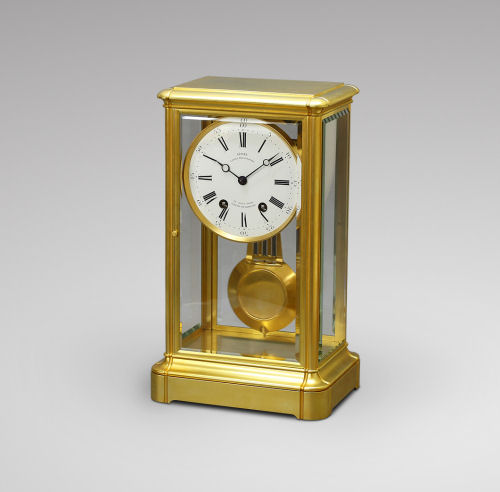
Louis-Philippe period precision table regulator clock, circa 1840. Movement of exquisite quality, similarly signed [...]
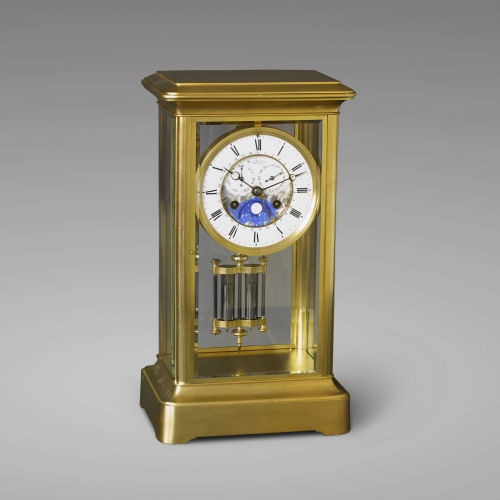
Table regulator with astronomical and year calendar, signed Maux Lacroix à Montpellier, circa 1870.
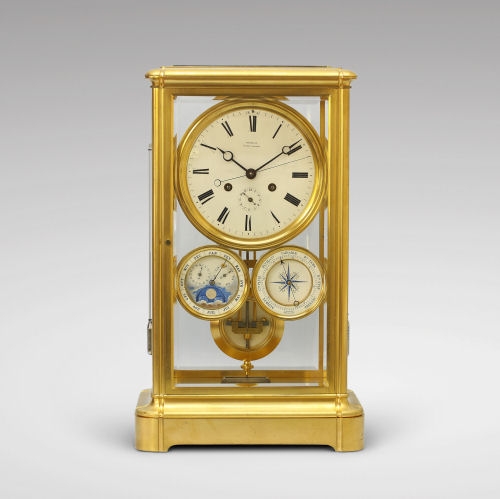
Exceptional Table Regulator With Complications; circa 1860, signed Dussault, 15 Passage Choiseul on the main dial [...]
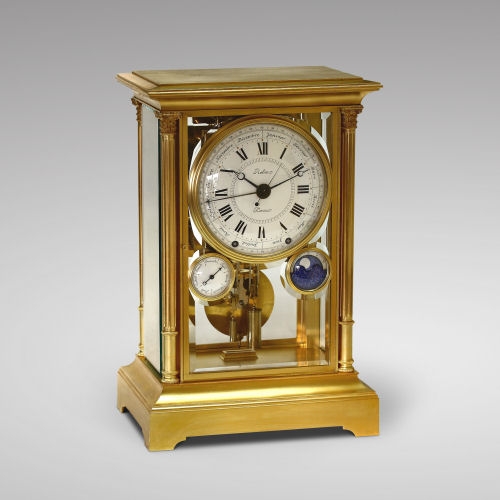
Four-glass ormolu table regulator with remontoire and full calendar, signed Robin à Paris, circa 1850.[...]
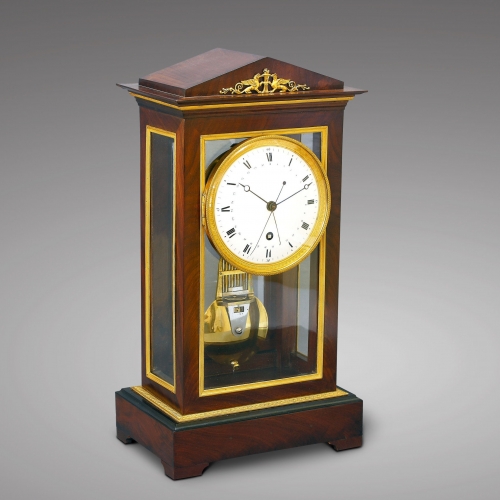
French precision table regulator of long duration, Empire period, circa 1805. Mahogany and ebonised wood [...]
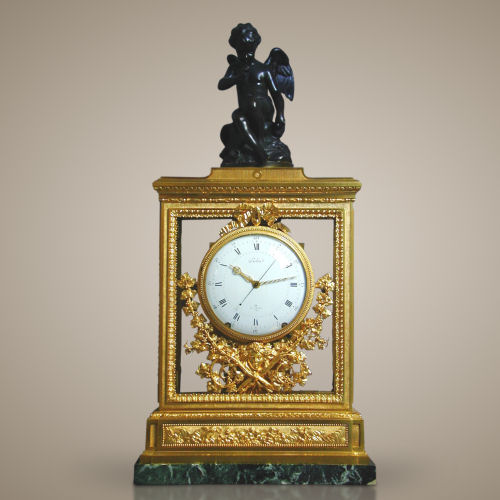
Four-glass table clock, the hour hand bearing the monogram R. Movement signed Robin Fils à Paris.
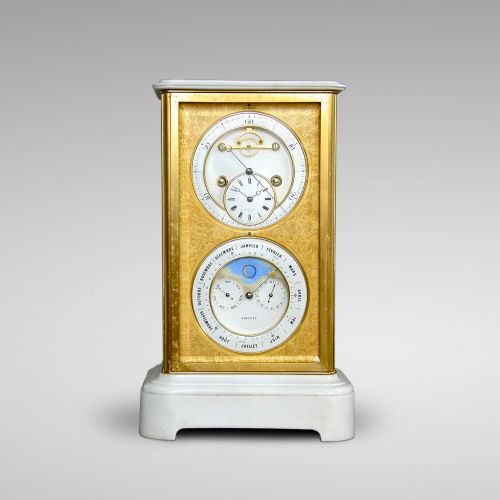
French regulator mantle clock with perpetual calendar, circa 1845, signed LEROY & FILS, Gie Montpensier 13 [...]
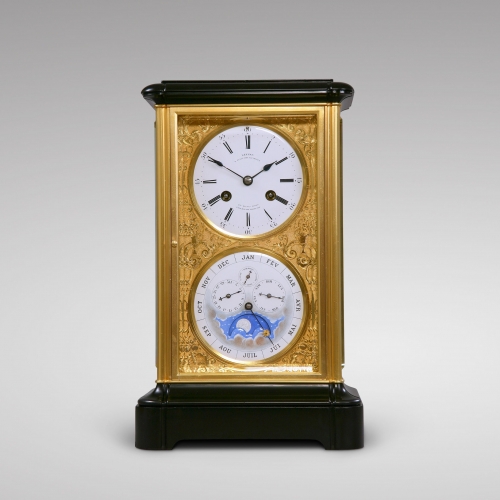
French regulator mantle clock with perpetual calendar, circa 1860, signed LÉPINE, 2 Place des Victoires et Palais Royal